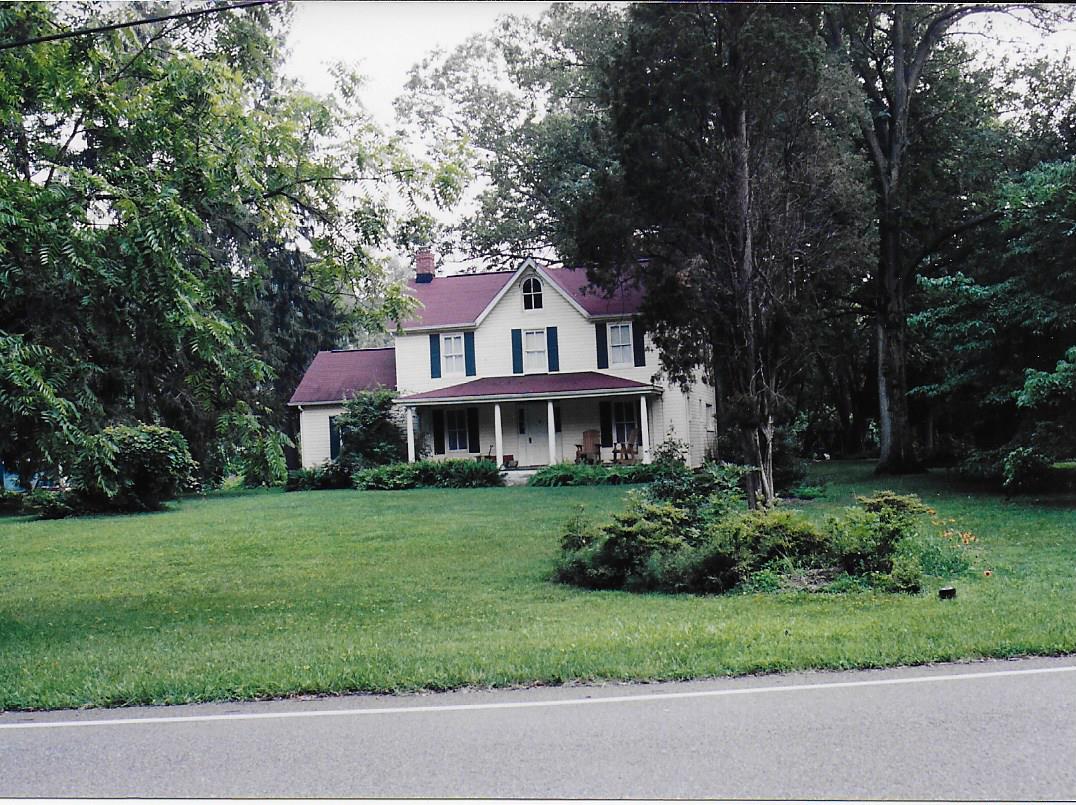AROUND THE PARK AGAIN By Sharon Lee Tegler
Cypress Creek, one of Severna Park’s oldest neighborhoods, has a richly layered past. It was settled in the 1600’s, like other parts of Anne Arundel County, but an actual community didn’t really take shape until the early 20th century. Taking its name from a tidal branch of the Magothy River 4-1/2 miles above the Chesapeake Bay, the community is now a mixture of early 20th century architecture, quirky mid-century to 1970’s styles and updated designs built on the footprints of former summer cottages. A cluster of new housing developments near Ritchie Highway completes the picture.

A constant name in property records and colorful neighborhood stories through all of this is that of the Dill family. The family farmhouse (pictured above) contributes greatly to the community’s character.
Lifelong resident Erman O. “Lanny” Dill’s grandfather, Edward O. Dill, cruised to Cypress Creek from Baltimore on his boat in 1915. He discovered the 100-year-old farmhouse on 16 acres which he purchased from Thomas A. Brown, (son of Thomas H. Brown). He was later responsible, with brother, Erman, for building Dill Road.
Succesive generations of the family occupied the farmhouse including Edward’s son, Erman O. Dill, Sr. and wife Anna. Grandaughter, Susan Dill, lives there now with husband Tony McConkey and children George and Edna.
But the story of the Cypress Creek community actually begins in 1896 when Thomas H. Brown sold a tract of 122 acres of land along Cypress Creek Road, including burial grounds, to William T. Hayes. The burial grounds, at the corner of Cypress Creek and Dill Roads, hold 17 graves, many unmarked and speculated to be those of slaves.
Ten years later, on October 18, 1906, Hayes transferred the property, known as Rockhold’s Addition, to the Severn Realty Company. Development of Cypress Creek began with subdivision of the tract into 13 sections. On section, which included Rice’s Wharf, was divided into lots and placed on the market. The properties were primarily sold to summer vacationers and scattered along the banks of the creek.
In those cottages and homes lived South Baltimore residents summering away from the heat of the city and eventually included an opera star, workmen, and a judge.

The original vacation homes were scattered along the banks of the creek. 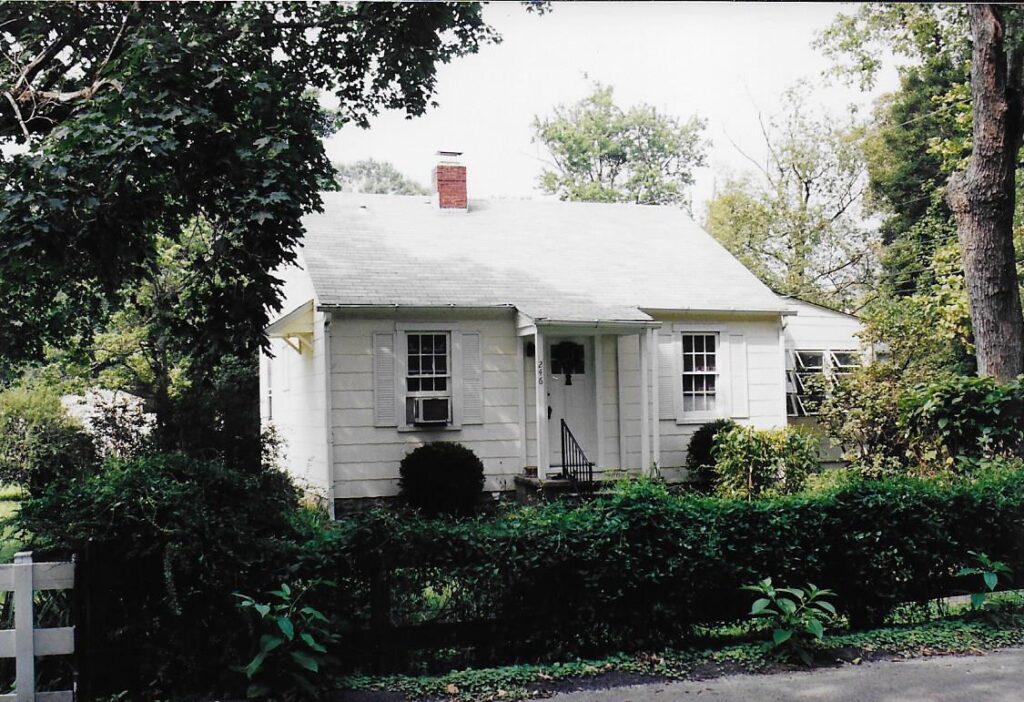
A couple original cottages still exist. This one is located near the end of Cypress Creek Road.
Only a couple of the original vacation cottages still exist along the banks of the creek but one, located near the end of Cypress Creek Road, is a good example. It’s small but has a screened summer porch to one side.
As the 1920’s roared in, the warm days of July and August were spent enjoying the creek’s clear waters and socializing.
“Cypress Creek was a party town like Round Bay and people liked to hoist a few,” said Lanny Dill. “During Prohibition, the community had its own bootlegger and there was a speakeasy down on one bank of the creek.”
From 1924 to 1926 the residents staged carnivals, using their profits to fund community improvements. Their success led to the establishment of the Cypress Improvement Association on March 20, 1926. Today, the CIA – as some wryly refer to it – oversees community development, joins with other organizations to protect estuaries and hosts a website at Cypress Improvement Association (google.com) .
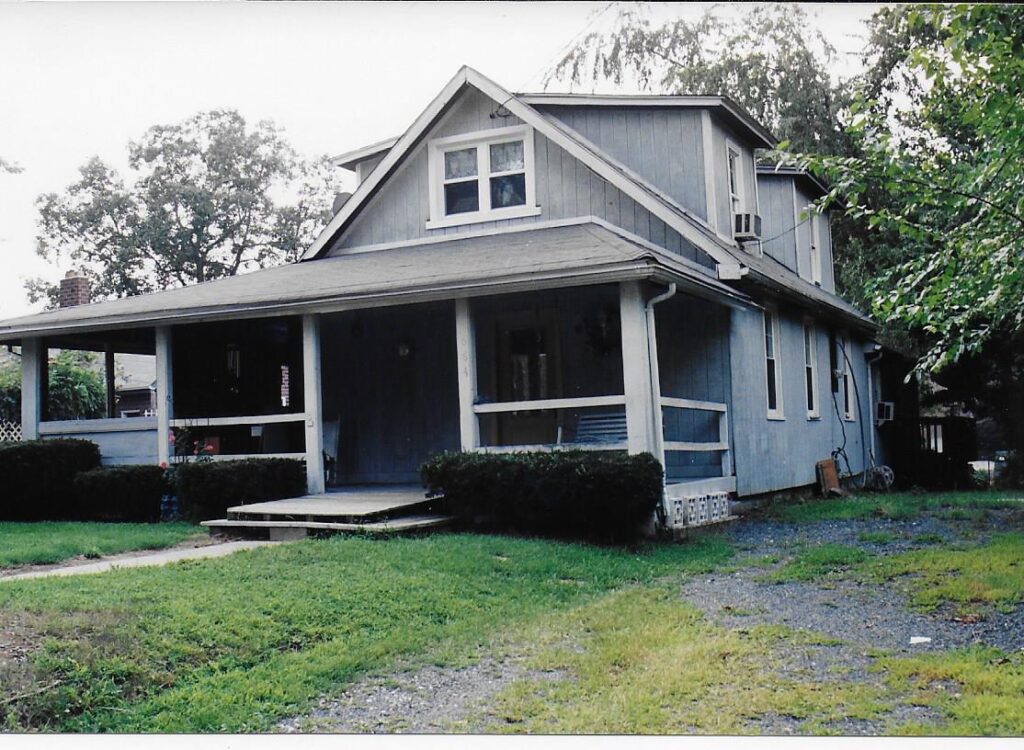
Early on, much of Cypress Creek was still farmland. The Tecl farm, located where St. John the Evangelist Roman Catholic Church now stands, sold fresh produce. Chicken and eggs were available at neighboring Wolfe’s farm. The seafood-rich waters yielded fish and crabs. A store on Creek Road, owned by Jeremiah Keefe, sold canned goods, beer, bait and gasoline to fishermen and locals.
The late Jean Friday, a lifelong resident and former CIA president lived in the house her family purchased in 1937. It was a spacious dwelling and they sometimes rented rooms and also sold meals. The residence has since been home to a couple different families.
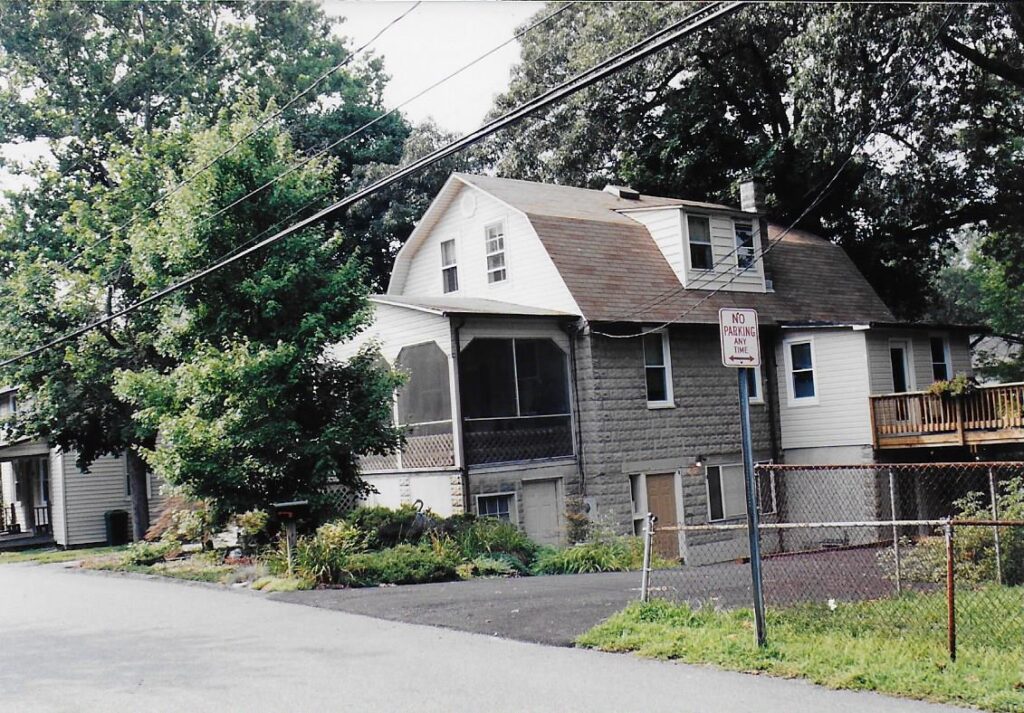
Friday recalled that niceties such as trash removal were late coming to Cypress Creek. Neighbors gathered on weekends in a field of daisies along Amoss Road to bury their trash and socialize while their children played nearby.
CIA board member Ed Krause tied expansion of the community to the installation of water and sewage lines in the 1970’s. Longmeadow North, Cypress Gardens, Lochwood and Ross Landing were developed then. Simultaneously, properties that once served as vacation retreats were rebuilt to accommodate year-round living. Krause’s own home sits on property purchased in 1907 by his uncle, Victor Krause.
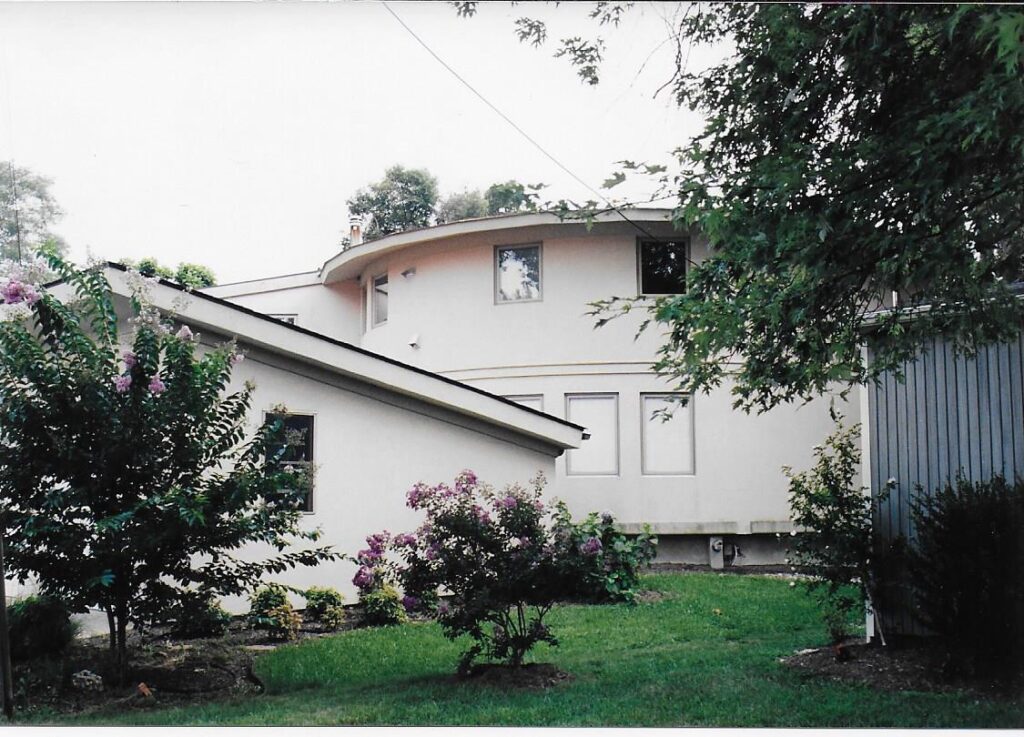
Some architecturally unique homes were built on the footprint of relatively small lots including the modernistic home seen here that is situated at the end of Creek Road.
Particularly, intriguing is a house on the banks of the creek itself. Built in 1912 and classified in the 1920’s as an “estate”, the elegant home provided magnificent views of the creek and Magothy River.
A retired opera singer, known to her neighbors as Mrs. Theis, lived in there in the 1930’s and later rented rooms to road construction workers. In the evenings, it is said, she gathered the men round and sang to them.
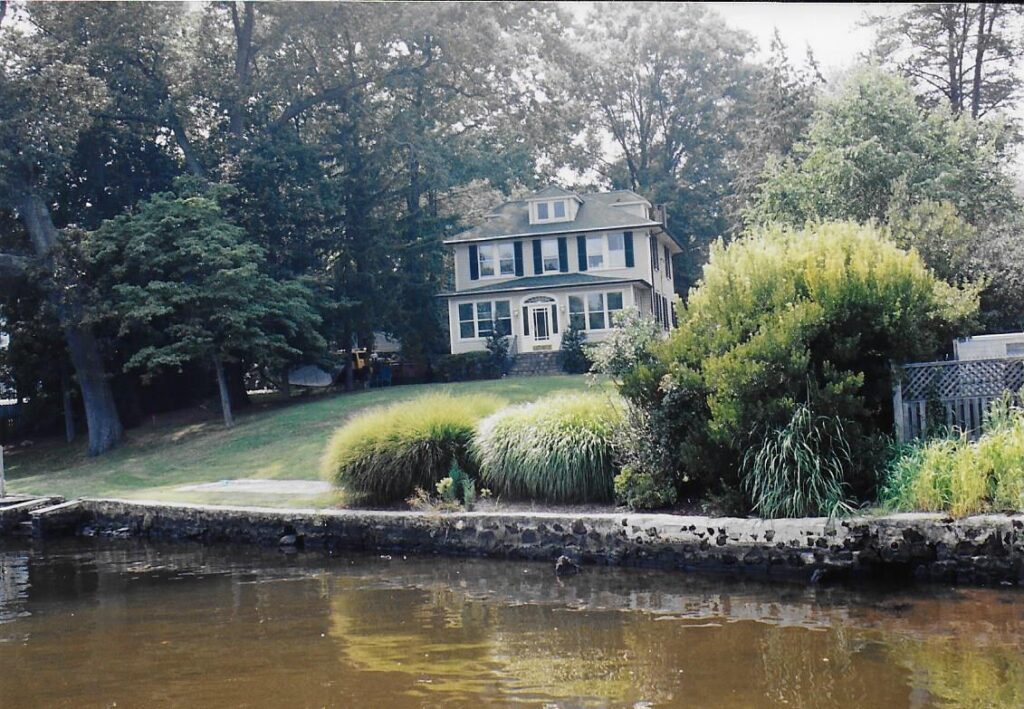
From the mid 1940’s to 1965, the home was called “Treehaven” and was the summer residence of Annapolis Circuit Court Judge Benjamin Michaelson and Naomi Dill Michaelson. From then through the end of the 20th century, ownership changed hands several times. In recent years, the property was sold again and, though the house still stands, the land around it was divided into building lots for two additional homes.
Burgeoning development has changed the character of Cypress Creek but traces of its past are still evident. The beauty of the many old homes contrasts with imaginative renovations and the Brady Bunch feel of the few remaining 70’s era homes.
Much admired in the community for its quaint charm and beautiful gardens is the home of Cindy and Jack Metzger at the corner of Cypress Creek Road and Creek Street. Like many owners of older homes, they made many improvements over the years.

Even the most recent developments of Dunkeld Manor, Trinity Farms, Cypress Point and Cypress Glen are acquiring a lived-in look and may, in time contribute their own chapter to the rich history of Cypress Creek.
Severna Park High graduate and former Cypress Creek resident lost in helicopter accident

Hospital Corpsman 2nd Class Sarah F. Burns, 31, a former Cypress Creek resident and Severna Park High graduate, perished in a mishap aboard the aircraft carrier USS Abraham Lincoln on August 31. According to the U.S. Navy, the MH-60S she was aboard, part of Helicopter Sea Combat Squadron-8, crashed on the deck of the carrier and fell into the Pacific 60 miles off the coast of San Diego, California. She was one of five crew members to die in the crash. One sailor aboard the helicopter survived.
Burns enlisted in the Navy in 2010 and joined the squadron in 2020. An investigation of the mishap is underway the service says.

